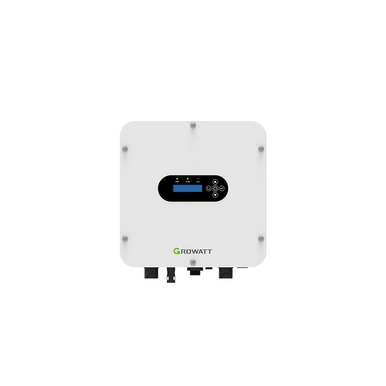Jnieto
New Member
My wife and I bought 12 acres of raw land in S. Texas, and we use this system to power our RV and our water well while we have our house built. We put this system together, built the ground mount for the solar panels, and built the solar shed that houses the equipment. We bought everything except the solar panels from Signature Solar as a kit and we figured out how to do it from videos and the manual. We bought the solar panels, used, from Santan Solar
2 – EG4 6500 ex inverters
6 – EG4 LifePower4 Batteries
38 – Solar panels (13160 watts)
2 – EG4 Chargeverter 5KW
Firman T7573 TriFuel generator form Costco
Because of our success with this project a friend of mine asked if I could help him make his livestock water well run on solar. He has a:
SHYLIYU Submersible Pumps 2.5" OD Pipe 110V/60HZ 0.25KW 0.33HP Stainless Steel 1" Outlet Submersible Bore Pump Deep Well Pump with Control Box for Farm Irrigation.
That is for a 60ft well that is used to water livestock and runs 30-45 min per cycle one to two times a day. The well is out on his pasture, and he said he could put up a metal shed near the well to house the equipment if necessary.
Would the following setup work for his needs?
EPEVER MPPT Solar Charge Controller 40A 150V PV Solar Panel Controller
GoWISE Power 1500W Pure Sine Wave Power Inverter 12V DC to 120 V AC
One 400-500watt solar panel
I’m not sure what battery to use,
Lithium like this one: Ampere Time 12V 100Ah, 1280Wh Best RV Lithium Battery
or
AGM Like this one: WEIZE 12V 100AH Deep Cycle AGM SLA VRLA Battery for Solar System
Also, what size wire and fuse or breaker would be best?
Thanks for your help!
2 – EG4 6500 ex inverters
6 – EG4 LifePower4 Batteries
38 – Solar panels (13160 watts)
2 – EG4 Chargeverter 5KW
Firman T7573 TriFuel generator form Costco
Because of our success with this project a friend of mine asked if I could help him make his livestock water well run on solar. He has a:
SHYLIYU Submersible Pumps 2.5" OD Pipe 110V/60HZ 0.25KW 0.33HP Stainless Steel 1" Outlet Submersible Bore Pump Deep Well Pump with Control Box for Farm Irrigation.
That is for a 60ft well that is used to water livestock and runs 30-45 min per cycle one to two times a day. The well is out on his pasture, and he said he could put up a metal shed near the well to house the equipment if necessary.
Would the following setup work for his needs?
EPEVER MPPT Solar Charge Controller 40A 150V PV Solar Panel Controller
GoWISE Power 1500W Pure Sine Wave Power Inverter 12V DC to 120 V AC
One 400-500watt solar panel
I’m not sure what battery to use,
Lithium like this one: Ampere Time 12V 100Ah, 1280Wh Best RV Lithium Battery
or
AGM Like this one: WEIZE 12V 100AH Deep Cycle AGM SLA VRLA Battery for Solar System
Also, what size wire and fuse or breaker would be best?
Thanks for your help!




